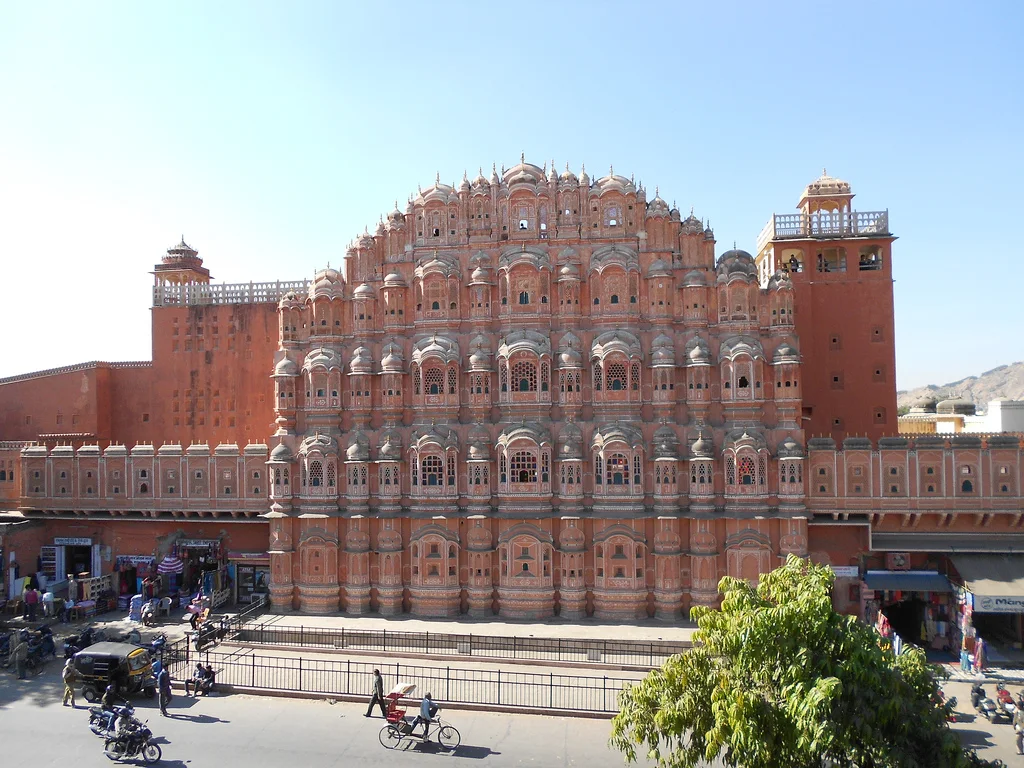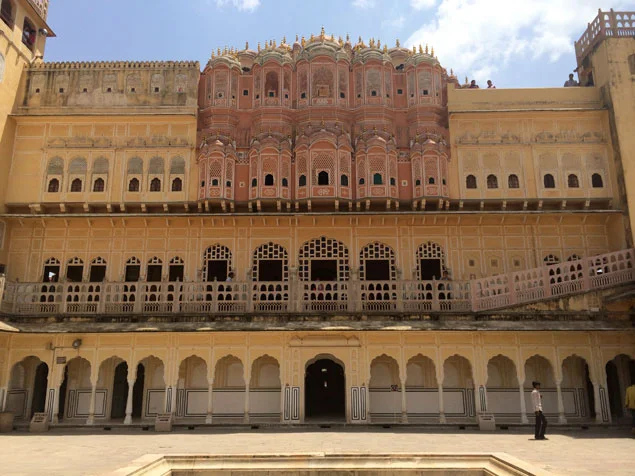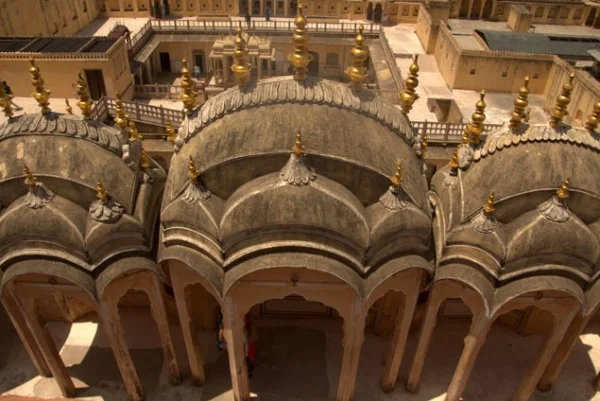Hawa Mahal (हवा महल), also known as the Palace of the Winds, is the main attraction in Jaipur. The palace received its second name due to the fact that thanks to a well-thought-out system of windows, natural ventilation is created in the premises of the building. Therefore, the inhabitants of Hawa Mahal, even in the most intense heat, were a little cooler than all other residents of the city, because a light breeze blew them, even if the city itself was completely calm. This ventilation system is recognized as unique, which makes the Palace of Winds even more attractive structure.
 |
| Hawa Mahal |
History of the Palace of Winds
Originally Hawa Mahal was created as a temple of the god Krishna. It was even built in such a way that its appearance resembled a headdress adorning the head of God. It turned out, in principle, it seems. However, Hawa Mahal never became a temple. Maharaja Sawai Pratap Singha, on whose orders the building was being erected, changed his mind and decided that the building would become a palace.
 |
| Hawa Mahal |
The exact date of construction has not been determined, but Hawa Mahal was built no later than 1799. The building is located right in the center of the city, so you don't have to go somewhere to see it, and if you already visit Jaipur, you will definitely not pass by the Palace of Winds. The facade of the building is very whimsical. It is unlikely that you can see something like this anywhere else. From a distance, it resembles a large anthill. Some argue that Hawa Mahal looks like a jewelry box. In general, if you imagine that the box is decorated with a lot of jewelry, then Hawa Mahal will really look like it, only instead of jewelry it is decorated with a huge number of windows, niches and balconies.
Despite all this jumble, the Palace of the Winds looks very elegant. Few architects manage to use so many architectural elements in a building, but at the same time not overload it, not harm the external appearance, but, on the contrary, decorate it. Hawa Mahal architects clearly balanced between sophistication and excesses, but were able to create the treasure of Jaipur.
 |
| Hawa Mahal |
Features of Hawa Mahal
Windows in Hawa Mahal play a special role, besides the fact that they create natural ventilation, decorate the building, make it unique, they were made with a specific purpose. The wives of the Maharaj and Indian princes usually lived in the Palace of Winds. They were curious ladies, but it was forbidden for women of high-ranking people in India to appear on display, so it was decided to make many windows in the Palace of Winds so that every wife could look out through this window into the outside world. But at the same time, the windows are arranged so that the wives could see everything, but no one saw them. When tourists stroll through the Palace of Winds, they must look out of these windows, imagining how the maharaj's wives did it. It's easier to understand their world this way.
 |
| Hawa Mahal |
Despite all the beauty of the palace and its advantages in the form of ventilation, it was not a permanent place of residence for the harem. Hawa Mahal is quite flat, so the rooms of the interior, although comfortable, are very small. It is always inconvenient to live in them, so the wives came here only during the holidays. They could watch the solemn processions in the street from their windows.
Another interesting feature of Hawa Mahal, which is made in 5 tiers, is completely devoid of stairs. They were not needed here. There are gentle transitions between floors. And so that the wives of high-ranking people do not fall, moving between floors, notches are made in the floor on gentle slopes. Hawa Mahal is a very unusual building in the Moorish style of pink sandstone, which, despite the heap of niches and windows, looks harmonious. It's worth seeing.
